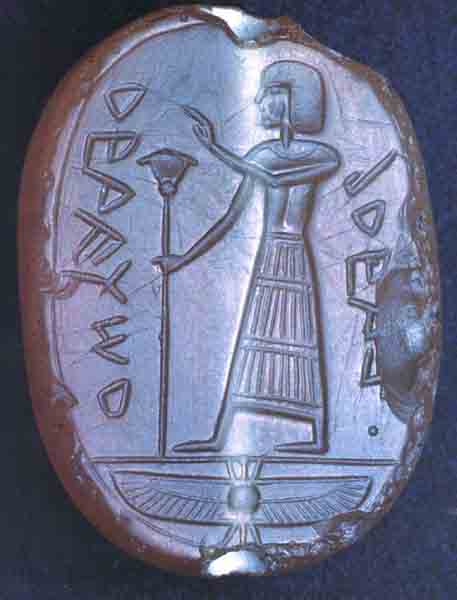Image Details

Courtesy Shlomo Mousaieff Collections, London
“Belonging to Abdi servant of Hoshea” reads the Old Hebrew inscription on this late-eighth-century B.C.E. seal, used to stamp official documents with the imprimatur of the owner. Made of orange chalcedony, this one-inch-by-two-thirds-inch seal—recently sold at auction in New York—is perforated from top to bottom so as to be worn around the neck on a string or mounted. The winged disk at the bottom, in the space called the exergue (usually reserved for text, as in the photo of the Habli seal), shows the cultural influence of Egypt throughout the region.
The term “servant” in such seals refers not to a menial worker but to an important official, a minister of a god or of a king. The owner of this seal, Abdi, was a minister of King Hoshea, who ruled from 732 to 722 B.C.E. and was the last ruler of the northern kingdom of Israel. Our seal can therefore be dated precisely to those years; it is one of the lastest artifacts discovered from the time before 722 B.C.E., when the Assyrians destroyed the kingdom of Israel and transformed it into an Assyrian province.
